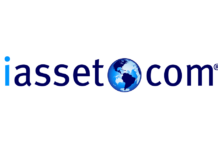The overall Canadian client PC market continued to decline in the fourth quarter of 2012, with shipment growth weaker than expected at -13.8% YoY decline. Canadian market performance suffered the largest annual decline of all regions, and was well under worldwide growth of -7.8% YoY, the largest market decline since Q3 2001. By comparison, the US market experienced a growth rate of -6.3% YoY in the fourth quarter. The weakness in the fourth quarter brought overall shipments for 2012 down to a 10.6% YoY decline. This marks the second consecutive year of negative growth for Canada.
While it's still too early to determine the impact of Windows 8 on the market, Q4 2012 marks the 8th consecutive quarter of negative growth in the consumer market in Canada; however in that time, more than 55% of Canadian households purchased a new PC.
Competition for market share continued to be fierce. HP led the overall Canadian client PC market with 24.4% unit share, gaining slightly from the 22.8% in Q3 2012, but with a unit shipment decline of -11.6% annually. Lenovo jumped from fifth spot in Q3 2012, to second spot with a share of 12.4% growing a strong 8.8% YoY. Not far behind, Dell follows with a share of 12.2% and -23.3% growth, Apple, with a share of 11.9% and growth of -14.1%, and Acer, with a share of 10.2% and growth of -55.7%.
"While the PC market continues to decline, it is approaching a potential saturation point, and under pressure from other product offerings like phones and tablets, the silver lining is that PC manufacturers are waking up to the challenges they face. New products are being developed that are relevant to the needs to today's consumers, the quality of these products has increased significantly, and the financial health of the industry is beginning to increase." Comments Tim Brunt, Program Manager at IDC Canada.
While the overall PC market continues to struggle with shipment growth, market saturation and competing technologies, the average selling values are continuing to rise to more healthy levels and device usage continues to lead competing technologies.












